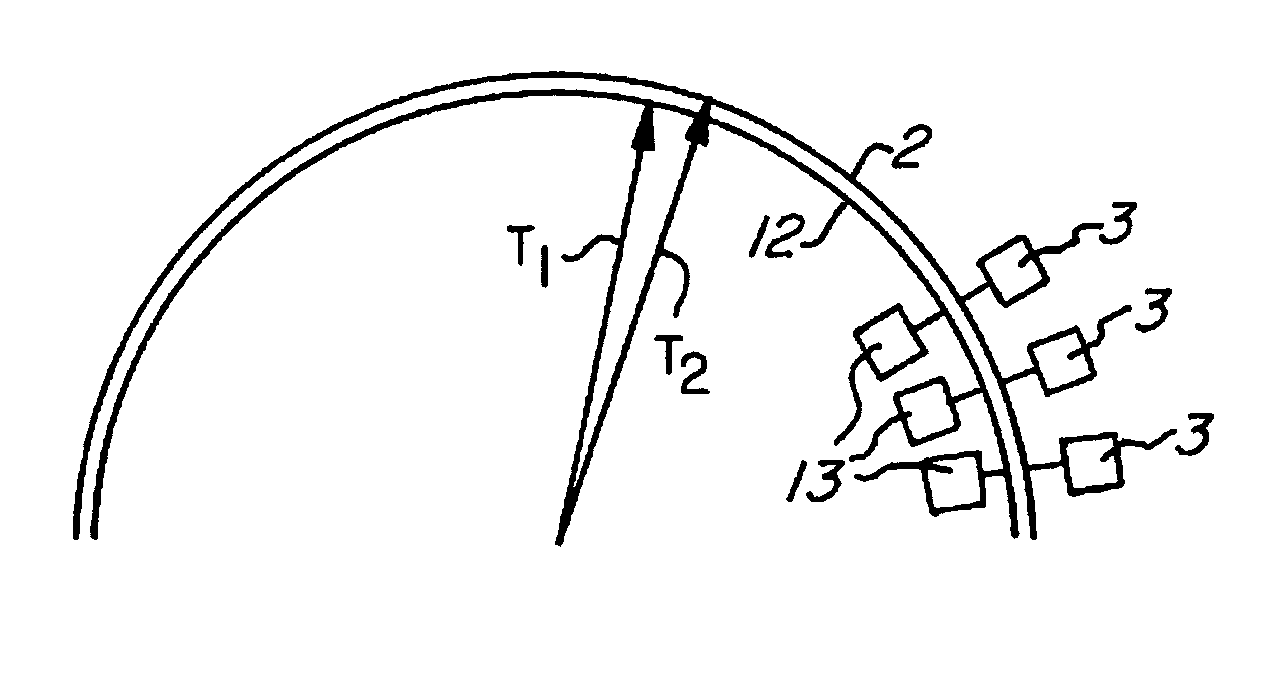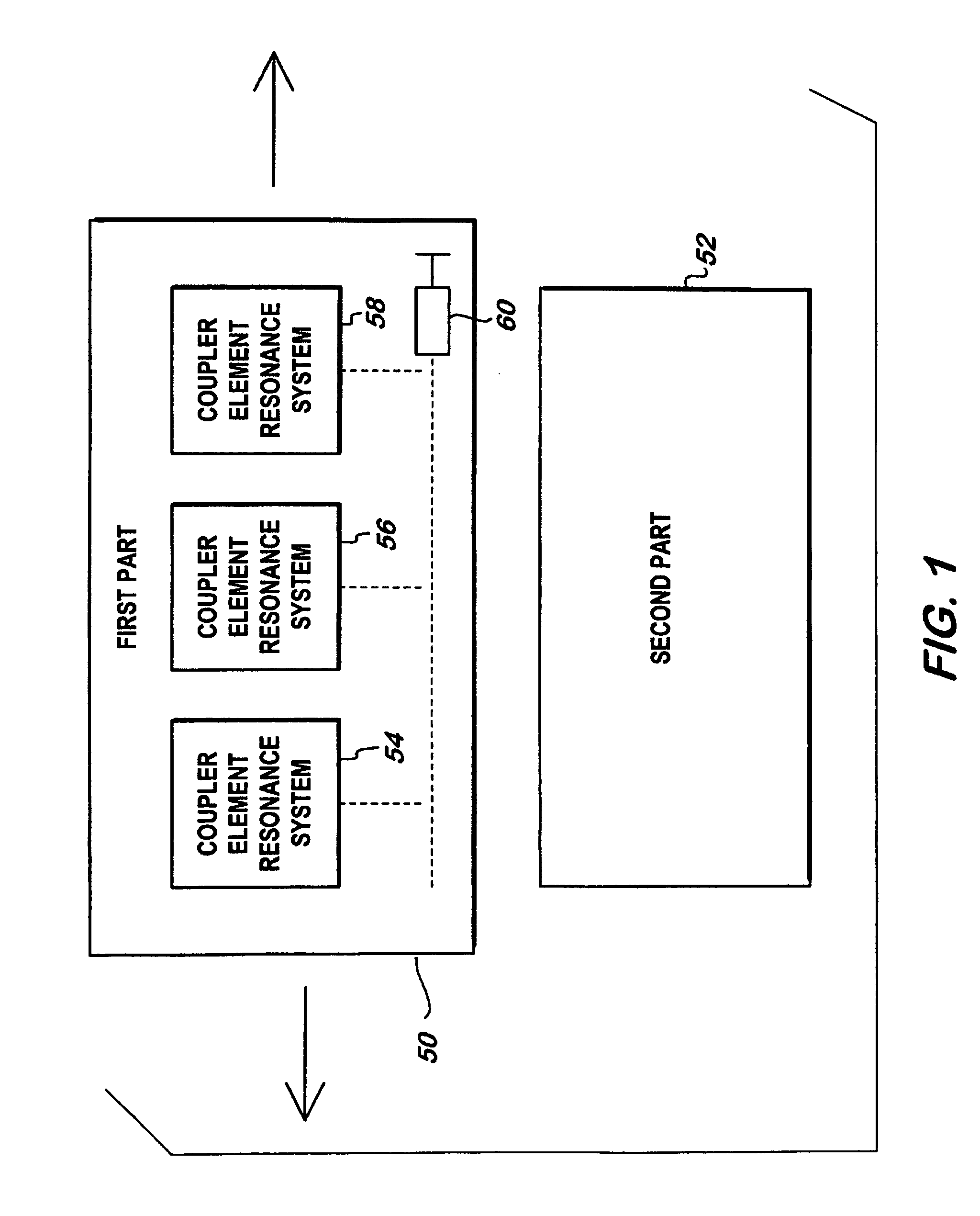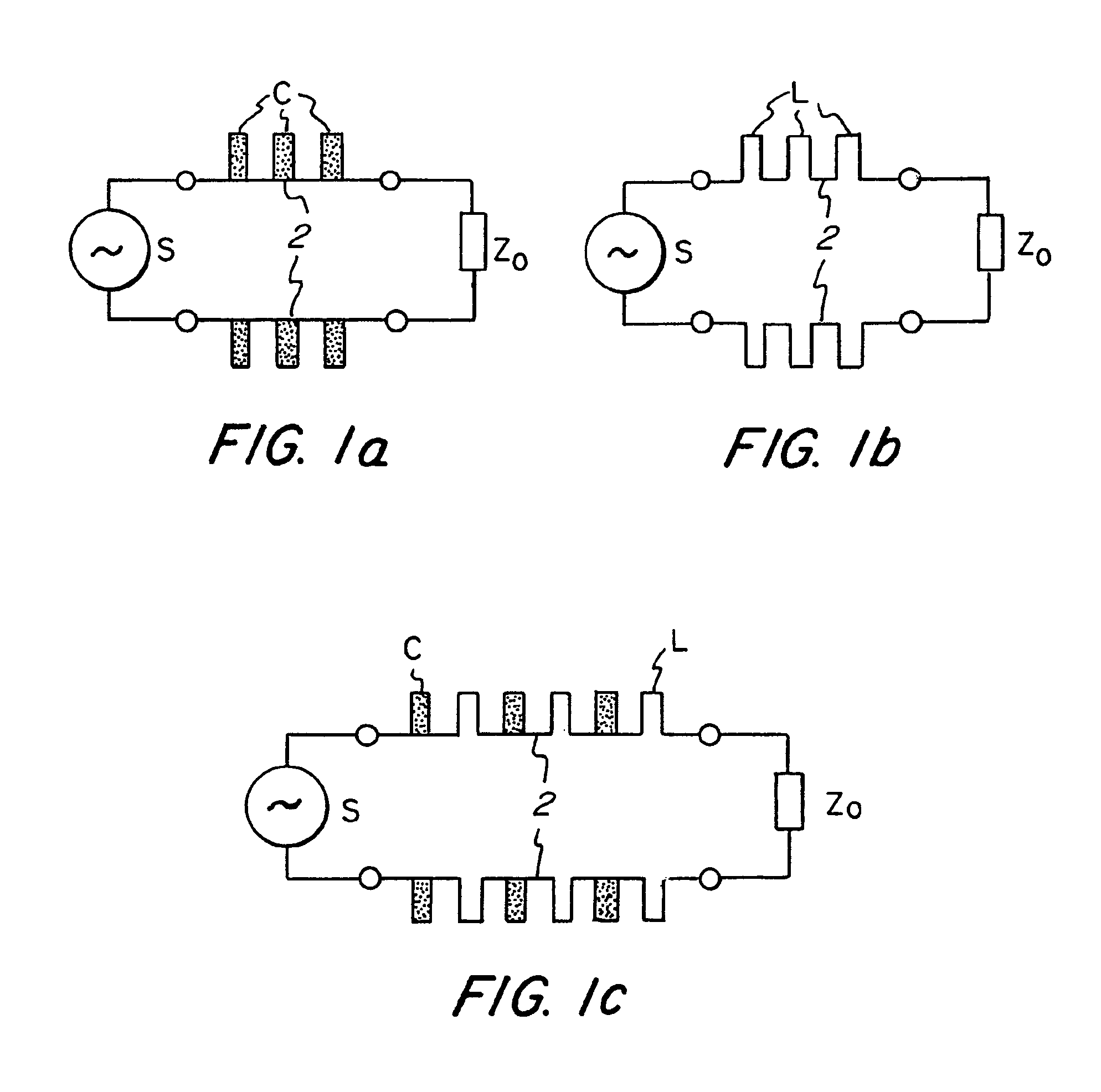Device for non-contact transmission of electrical signals and/or energy
a non-contact, electrical signal technology, applied in the direction of post-communication radio transmission, transmission, inductance, etc., can solve the problems of not being able to operate at operating frequencies in the mhz range and above, not being able to transmit signals with a bandwidth, and not being able to meet the needs of wide-band electrical signal transmission, etc., to achieve simple matching and low-cost structure
- Summary
- Abstract
- Description
- Claims
- Application Information
AI Technical Summary
Benefits of technology
Problems solved by technology
Method used
Image
Examples
Embodiment Construction
[0082]In the following figures the same reference numerals have been used to denote identical elements or elements producing the same effects so that partly a repeated discussion may be omitted here.
[0083]FIG. 1 illustrates an advantageous embodiment of the present invention including first part 50 and second part 52. First part 50 includes a plurality of coupler elements 54, 56, 58. Coupler elements 54, 56, 58 comprise a conductor structure configured as a cascade circuit, which is provided with a termination 60 to minimize signal reflection. Each coupler element illustrated on first Part 50 is configured as a resonance system independent of each of the other coupler elements on first part 50, which has a resonance frequency higher than the highest frequency of the wide-band signals to be terminated. It should be noted that while coupler elements 54, 56, 58 are shown in first part 50, they may alternatively be located in second part 52. It is only necessary that they are provided o...
PUM
 Login to View More
Login to View More Abstract
Description
Claims
Application Information
 Login to View More
Login to View More - R&D
- Intellectual Property
- Life Sciences
- Materials
- Tech Scout
- Unparalleled Data Quality
- Higher Quality Content
- 60% Fewer Hallucinations
Browse by: Latest US Patents, China's latest patents, Technical Efficacy Thesaurus, Application Domain, Technology Topic, Popular Technical Reports.
© 2025 PatSnap. All rights reserved.Legal|Privacy policy|Modern Slavery Act Transparency Statement|Sitemap|About US| Contact US: help@patsnap.com



